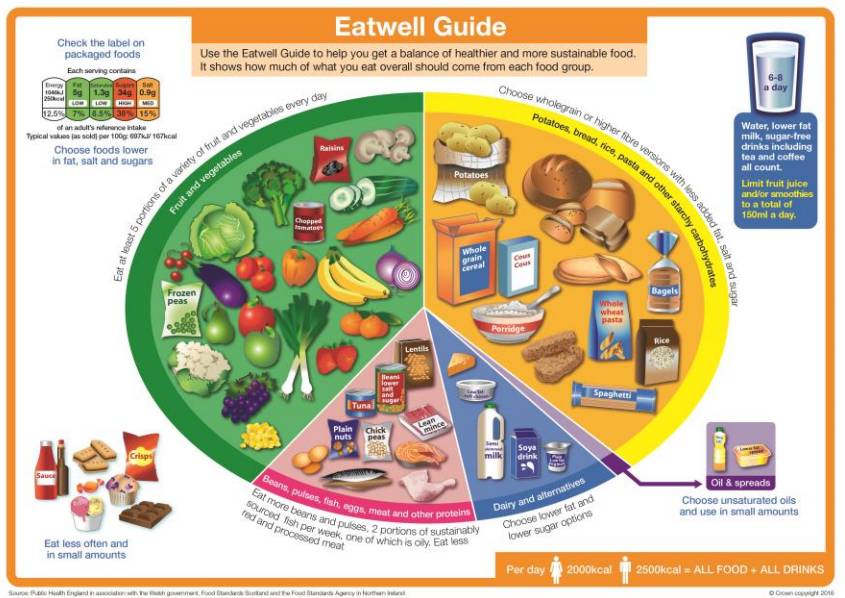Gastro-Oesophageal Reflux and Nutrition
Please note, this page is printable by selecting the normal print options on your computer.
What is gastro-oesophageal reflux disease (GORD)?
GORD is a term used to describe a wide range of symptoms such as acid reflux, heartburn and oesophagitis. It may also be the main cause of indigestion (dyspepsia) which is associated with experiencing stomach discomfort/pain, bloating and feeling full quickly usually after eating or drinking.
What are the other symptoms?
Symptoms can vary from person to person and they may be experienced frequently or only occasionally. The most common symptoms are:
• Feeling bloated and belching;
• Nausea and vomiting;
• Being unable to finish a normal sized meal;
• Acid reflux (where stomach contents come up towards your mouth)
• A sharp, burning pain below the ribs or shoulder blades;
• Tooth decay and gum disease;
• Sore throat and a persistent cough.
The following may be signs of a more serious condition and you should inform your doctor if you experience any of the following:
• Vomiting blood or vomiting regularly over a period of time;
• Experiencing difficulties swallowing foods;
• Ongoing unintentional weight loss.
Who gets GORD and what causes it?
GORD is a common condition affecting 1 in 10 people. However, only a small percentage of those affected will consult their doctor. It is caused by the reflux of stomach contents (which contains acids and enzymes) up into the food pipe or oesophagus, over time this causes damage and inflammation and may develop into more serious conditions such as Barrett’s Oesophagus.
GORD can be attributed to several diseases of the digestive system however, in most cases (up to 70%) no cause is found. It is more common in individuals with a hiatus hernia, weaknesses of the
sphincter muscle (the valve between the stomach and the oesophagus), and an infection with a bacterium called Helicobacter pylori. If caused by the latter, a breath-test and course of antibiotics
will help to identify and treat this.
It is known to be more common in pregnancy, in individuals who are overweight, and in those over the age of forty. Diet and lifestyle factors may also play a role in symptom development and this
leaflet will provide more information on this.
How is GORD treated?
Your doctor or pharmacist will be able to give you more information on medications that may help to relieve your symptoms. Occasionally diet and lifestyle changes improve symptoms enough to
enable some people to come off their medications.
Step 1: Modify Lifestyle Factors

What other lifestyle factors can help?
• Avoid tight fitting clothes (especially after eating).
• Prop your head up while you sleep or raise the head of your bed.
• Avoid laying down flat after meals.
• Avoid eating late at night or within 3 hours of going to bed.
• Avoid heavy exercise immediately after eating.
• Avoid bending down or lifting heavy objects after eating.
Step 2: look at your eating habits

Avoid having large meals. Eat smaller more frequent meals and avoid long periods without eating. Choose a variety of foods from each of the 5 food groups. If you are avoiding food groups your diet may start to lack essential nutrients. If you are concerned, consider taking a multivitamin and mineral tablet. Eat slowly and chew your food well. Avoid eating very hot or very cold foods as you may swallow extra air when eating which could make symptoms worse.
Can symptoms be triggered by specific foods?
Some people find the following foods may make symptoms worse:
Coffee
Fizzy drinks
Onions
Chocolate and cocoa
Citrus fruits or juices
Garlic
Spicy foods
Tomato based foods
Processed meats
Food sensitivities vary from person to person. Keeping a food and symptom diary for 2-4 weeks can help you to identify any problem foods that may be worsening your symptoms. High fat foods can also make symptoms worse. These tend to take longer for your body to digest and as a result more gastric juices are produced.
• Try to avoid or limit intake of fried breakfasts, crisps, chips, pastries, pies, pizza, battered and deep fried foods, sausages, full fat milk, mayonnaise, cakes and biscuits.
• Trim off any skin or visible fat from meat and poultry.
• Use no more than 1 teaspoon of oil per person in cooking – you could try a spray oil too.
• Opt for grilled, oven baked, steamed or boiled foods over fried foods
• Drain off excess fat in your meals before serving.
For more information:
The following may help give you further information and support on GORD.
• https://gutscharity.org.uk/advice-and-information/symptoms/heartburn-and-reflux
• https://www.nhs.uk/conditions/heartburn-and-acid-reflux
